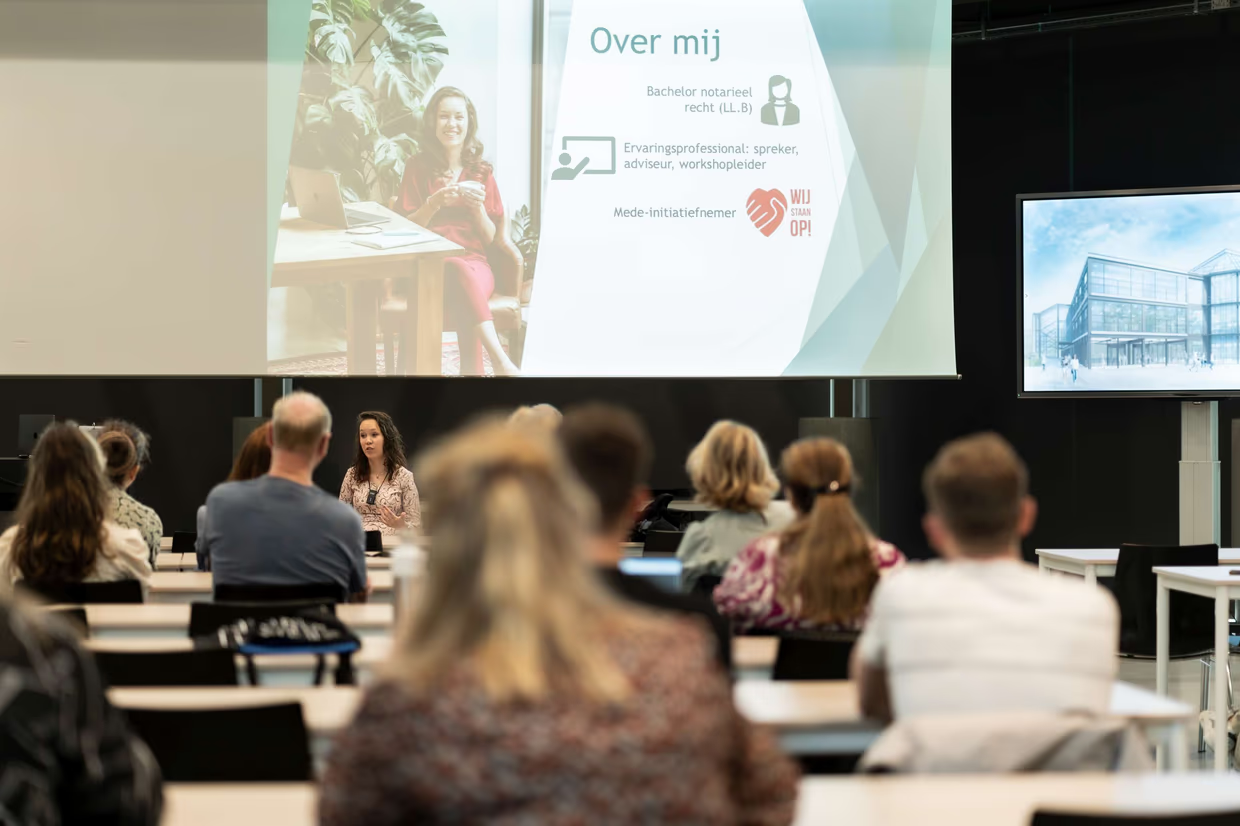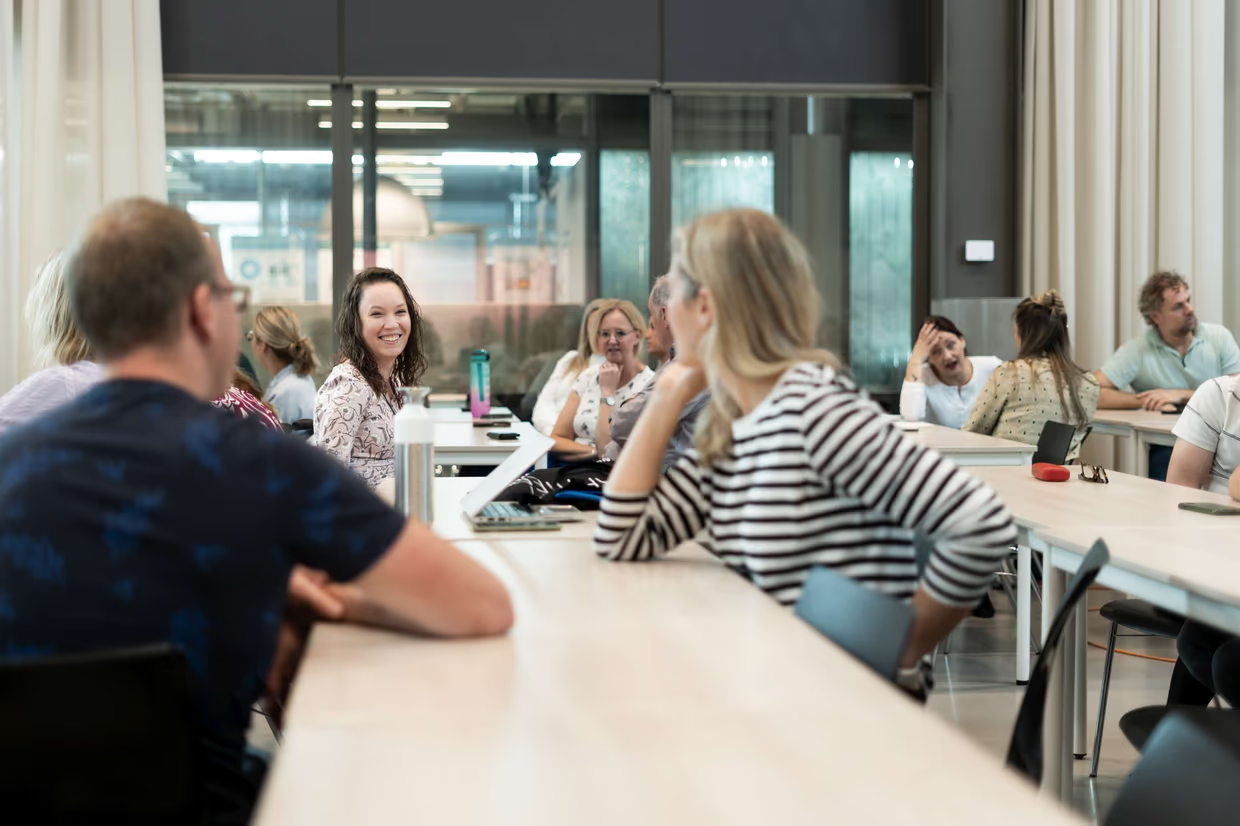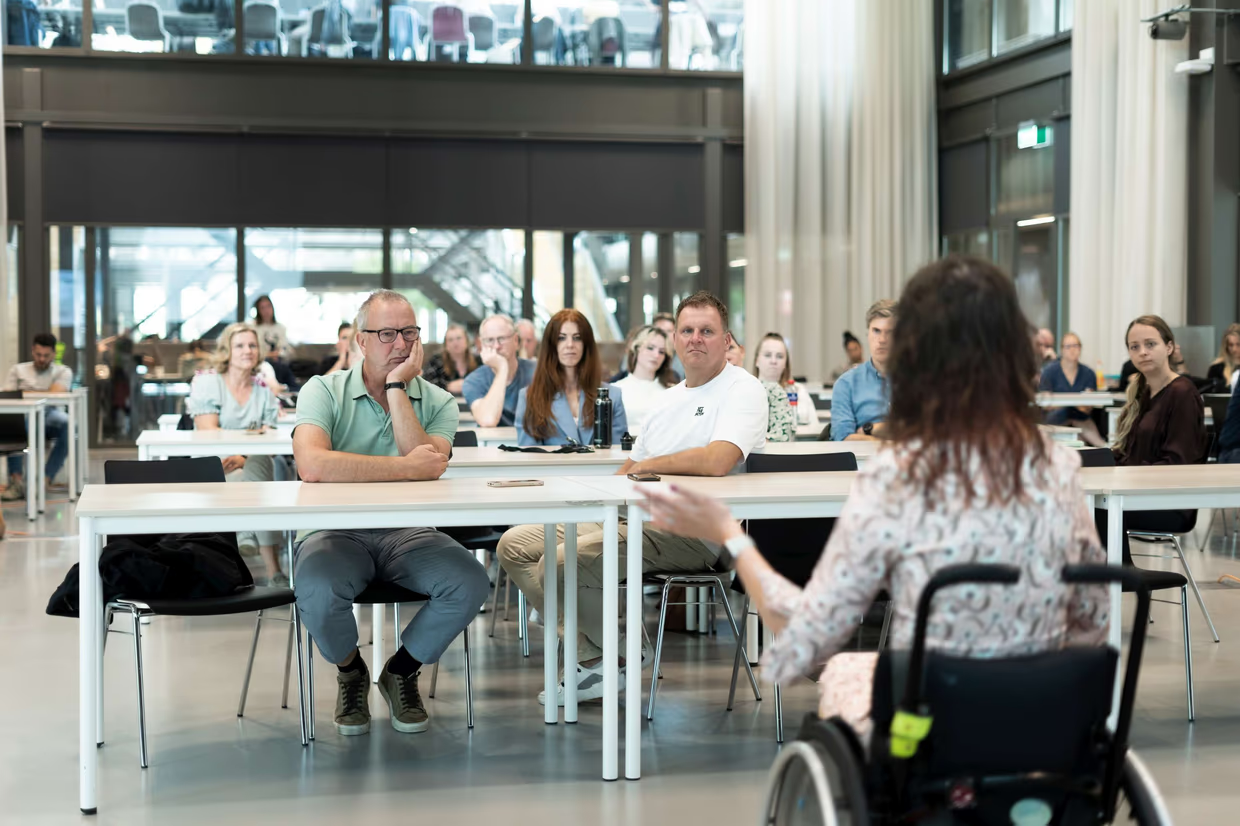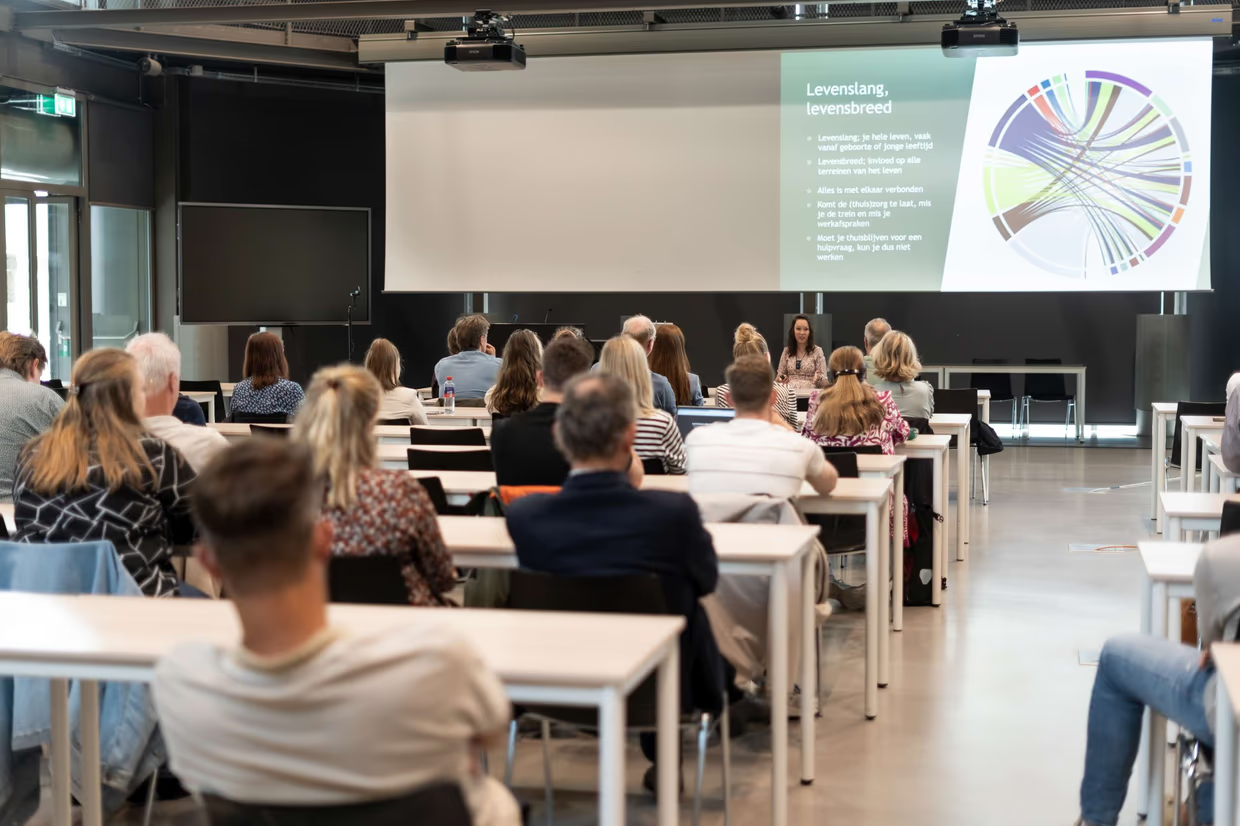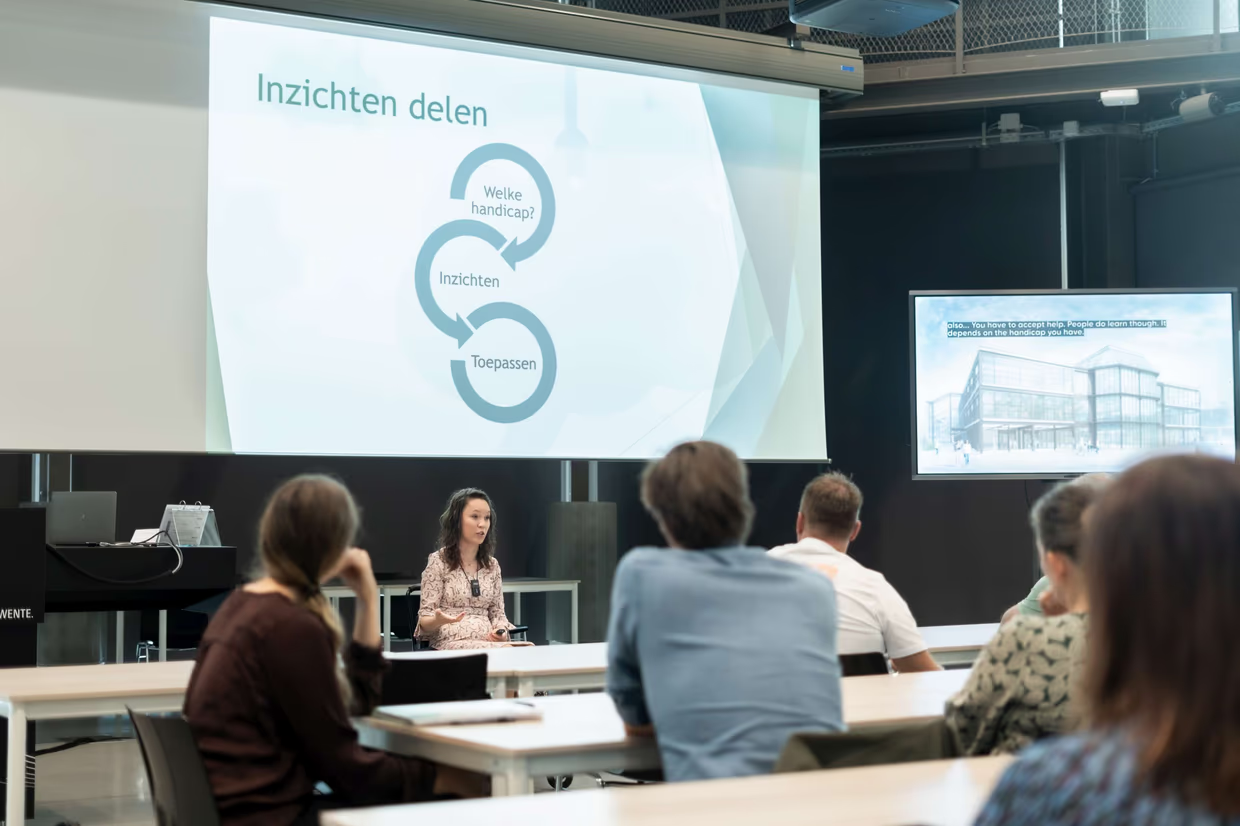On 2 October, it happened: experiential expert Jiska Ogier spoke to a packed audience about accessibility and inclusion. Many colleagues, especially those from CFM, HR, and the organisers of this event, the members of the Inclusion task force within CFM, witnessed how Jiska hit the nail on the head. With humor, a substantial amount of knowledge, and numerous compelling examples, Jiska engaged everyone in the world of individuals with physical, visual, and/or auditory disabilities. It was a learning experience, relatable, and sometimes it stirred emotions. In this article, you can read about how the conversation went.
The atmosphere immediately lively, after Jiska’s question to the audience: "How many of you wear glasses or contact lenses? And do you feel that you have a disability and need assistance when crossing the street?". The answer can be guessed. Then, Jiska briefly talked about her disability (she has cerebral palsy and uses a wheelchair), background, and experience – she is a legal specialist and former lobbyist – and has been working, first as a volunteer, and currently as an independent professional for years to advocate for equal rights and opportunities for people with disabilities. During her student years, she was one of the founders of Wij Staan Op! (website is written in Dutch). This is a Dutch organisation dedicated to an inclusive society, inclusive education, and an inclusive job market. More about Jiska and her work can be found Jiska’s own website. After this brief introduction, we quickly moved on to the main topic of the conversation: accessibility.
Compelling examples
Through the photos Jiska showed, it became clear that it can still be incredibly challenging to get to where you need to be when using a wheelchair, walker, or a guide path on the streets, at stations, and in buildings. Why does this happen? Due to unawareness, and sometimes simply because it hasn't been considered. For example, when a cargo bike is placed right in front of a ramp, or when a passage becomes too narrow due to roadworks, blocking the guide path as well.
From routine adaptation to inclusive thinking
But even on our own premises – on campus – there are still many places that are not always accessible, even if it's “just” because the focus is on an adaptation for people with disabilities, and not on a universal, inclusive solution for everyone. Examples include wheelchair lifts that make a lot of noise when used, the detour you have to take to get somewhere because the main entrance can only be reached via stairs. And last but not least, there are too small wheelchair-accessible restrooms, with thresholds and heavy door closers. Jiska emphasised once again: simply following the building regulations obediently doesn't make your building fully accessible. Sustainable engagement of experiential experts is required, along with a good deal of creativity and empathy.
Empathy and energy balance
Empathy was also required for the exercise that Jiska asked the attendees to do in pairs: think back to what you did yesterday and imagine having a physical or visual disability. What obstacles would you encounter? And consider how much energy you would spend even before you reach where you need or want to be. The task was very enlightening and gave everyone food for thought. Because the ability to quickly shower, get dressed, have breakfast, and hop on a bike to appear at work well-rested was simply not an option.
How it can be done: clear communication, meaningful conversation, and active listening
Was it then, lastly, all doom and gloom when it comes to accessibility? Absolutely not. Jiska inspired everyone in the room with inspiring examples of how it can be done differently. Clear communication plays a key role in this. A sign indicating how to bypass a blockage or a broken elevator with a wheelchair or stroller, an extra parking spot designated for parking handbikes, tricycles or mobility scooters, or a clear instruction on how to use support bars in an accessible restroom. These examples show how simple – and enjoyable – it can be to work towards greater inclusion. By starting from the premise that everyone is different and equitable. And from there, figuring out what is comfortable for everyone, regardless of whether someone has a disability, wears glasses, or had a restless night. Engage in conversations with each other, listen actively and find out how you can support one another.
Want to know more about or contribute to greater inclusion?
After reading this news item, you might be are curious and wish to learn about how inclusion is being promoted within CFM. Or perhaps you want to contribute to greater inclusion, equity, and diversity yourself, please contact Geert Jan Westhof. He is the initiator of this task force. You can also read more on UT’s corporate website about diversity, equity, and inclusion (DE&I). You can find more news, inspiration, and information on the Topic Page on the Service Portal. Did you know that UT’s DE&I Team is also on Instagram? Look up @utwentedei and follow the Team!

